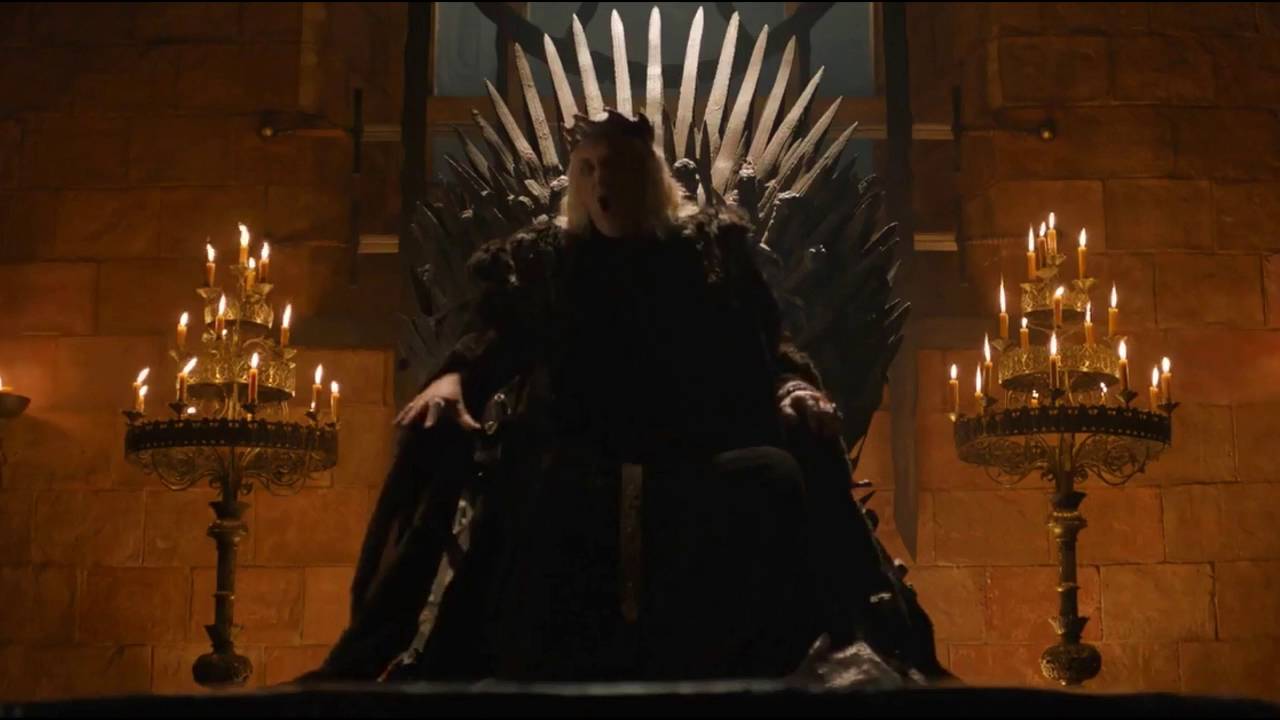Literary and Artistic Depictions of the Mad King: The Mad King Got

The mad king got – Throughout history, the figure of the Mad King has captivated the imaginations of writers, playwrights, and filmmakers. From Shakespeare’s Lear to Tolstoy’s Ivan the Terrible, these characters have become archetypal symbols of power, madness, and the fragility of the human psyche.
Characteristics and Motivations, The mad king got
Mad Kings are often characterized by their erratic behavior, delusions of grandeur, and a tendency towards violence. Their motivations can be complex and varied, ranging from personal trauma to political ambition. Some Mad Kings, like Lear, are driven by a desire for power and control, while others, like Hamlet, are tormented by guilt and despair.
Literary Devices
Writers and filmmakers have employed a variety of literary devices to convey the madness of these characters. These include:
- Stream of consciousness: This technique allows readers to experience the Mad King’s thoughts and emotions directly, providing a glimpse into their fragmented and disordered minds.
- Symbolism: Mad Kings are often associated with symbols of chaos and destruction, such as storms, fires, and animals.
- Foreshadowing: The author may use subtle hints and foreshadowing to suggest the Mad King’s impending downfall.
Themes
The Mad King archetype explores a number of important themes, including:
- The dangers of unchecked power
- The fragility of the human mind
- The consequences of hubris
Psychological and Cultural Perspectives on the Mad King

The behavior of the Mad King has been the subject of much speculation and debate, both from a psychological and cultural perspective.
Psychologists have proposed various theories to explain his behavior, including schizophrenia, bipolar disorder, and paranoia. However, there is no consensus on a single diagnosis, and it is likely that the Mad King’s madness was caused by a combination of factors, both psychological and environmental.
Cultural and Societal Factors
The cultural and societal context in which the Mad King lived also played a role in shaping his madness. In many cultures, madness is seen as a sign of divine favor or possession by spirits. In the Mad King’s case, his madness may have been exacerbated by the fact that he was a powerful ruler who was feared and respected by his subjects. This may have led him to believe that he was above the law and could do whatever he wanted.
The Mad King’s madness also reflected the fears and anxieties of the people he ruled. His erratic behavior and violent outbursts may have been a source of comfort to some, who saw him as a symbol of their own repressed anger and frustration. Others may have seen him as a threat to their safety and well-being.
Role in Reflecting Societal Fears
The Mad King is a powerful figure who has been used to reflect the fears and anxieties of many different cultures. His story is a reminder that madness is a part of the human condition and that it can strike anyone, regardless of their power or status.
The Mad King also serves as a warning about the dangers of unchecked power. When a ruler is allowed to become too powerful, they may become detached from reality and begin to believe that they are above the law. This can lead to tyranny and oppression, as the Mad King’s reign of terror demonstrates.
The Mad King’s reign was marked by madness and chaos, leading to the downfall of his dynasty. His erratic behavior and cruel punishments left a lasting impact on Westeros. Tune in to game of thrones tonight to witness the aftermath of the Mad King’s reign and the struggle for power that ensued, shaping the destiny of the Seven Kingdoms.
The Mad King got wind of it and his paranoia flared. His descent into madness had been a slow burn, but now it was a raging inferno. The people of Westeros whispered of his tyranny, but they dared not speak openly.
The air was thick with fear, and the once-great king had become a shadow of his former self. Even the fabled game of thrones air time could not distract the Mad King from his delusions.
The Mad King got dethroned, and the realm rejoiced. But in the shadows, a new threat emerged, one that would challenge the very foundations of Westeros. Game of Thrones: Laurenti tells the tale of a forgotten prince, who seeks to reclaim his throne and plunge the realm into darkness.
The Mad King’s madness may have ended, but the battle for Westeros is far from over.
The Mad King got away with it for a long time, but his cruelty and paranoia eventually caught up to him. The people of Westeros rose up against him, and he was killed by his own Kingsguard. His death marked the end of the Targaryen dynasty, and the beginning of a new era in Westeros.
If you’re a fan of Game of Thrones, you can check out game of thrones banners nyc to find some cool merchandise. The Mad King may be gone, but his legacy lives on in the hearts and minds of the people of Westeros.
The Mad King got his hands on a dragon egg and all hell broke loose. Or so they say. In the realm of game of thrones laurenti , the Mad King’s madness is just a whisper in the wind, but it’s a whisper that still haunts the halls of power.
The Mad King’s reign was a time of terror and bloodshed, and it’s a time that Westeros will never forget.